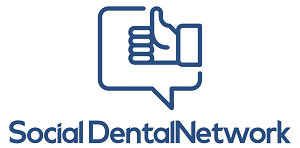
Dentists Can Help Identify Eating Disorders
In addition to helping diagnose diabetes, acid-reflux disease, oral cancer & other overall health issues, our trusted dentists can identify the early warning signs of an eating disorder.
Of course they can, just think about it…who else looks in our mouths with such a qualified & discerning eye?
By doing so, dentists can help catch things early and help patients struggling with an eating disorder to get help by referring them to the necessary behavioral health professionals.
Why would we be concerned with dentists identifying eating disorders?
The National Eating Disorders Association (NEDA) estimate that more than 10 million Americans are currently affected by serious eating disorders such as anorexia, bulimia and binge eating.
According to the American Dental Association, eating disorders can adversely impact a person’s oral health, which NEDA estimates affect 89 percent of bulimic patients.
What are the signs of eating disorders that dentists would notice?
Dental Health Signs of Eating Disorders
In their article on the subject, the ADA highlights Dr. Jessica Yoo, a dentist working at Mary’s Center, a community health center in Washington, D.C.
Dr. Yoo went on to say,
“Some patients may not even realize they need help,” she said. “Dentists are in a great position to detect the early signs and symptoms of eating disorders and even help the patients recognize the eating disorder. I try to help by listing the clinical findings such as eroded enamel, exposed dentinal layer, caries, trauma on hard palate due to self-induced gag reflex, angular cheilitis, halitosis, etc., so the patients can understand what is going on with their oral health and I answer any questions they may have.”
Dr. Yoo outlined some of the most obvious signs dentists could see from a patient suffering from an eating disorder:
• Eroded tooth enamel
• Halitosis
• Tooth decay
• Dry mouth
• Trauma to the palate (due to self-induced gag-reflex)
• Changes in the color, shape and length of teeth.
• Increased tooth sensitivity or decay.
• Enlargement of the salivary glands
• Reddened, dry & cracked lips
Dr. Yoo said she first encountered a patient with an eating disorder as a student at the Temple University Kornberg School of Dentistry.
One of her first patients was a part-time model who suffered from bulimia nervosa — a condition NEDA defines as “a serious, potentially life-threatening eating disorder characterized by a cycle of bingeing and compensatory behaviors such as self-induced vomiting.”
She spent most of her clinical years in school following up with the patient. The two women later became friends, and helping patients with eating disorders sparked a personal passion in the new dentist.
“In trying to help her as much as I can. I started talking to professors from multiple disciplines, including restorative dentistry and endodontics to a behavioral health science
professor. We also had multiple lectures on the early detection of eating disorder, which helped me correctly diagnose and direct the conversation toward it.”
Dentists Diagnose Cavities…And A Whole Lot More!
It’s 2018, despite more information & research in the oral systemic dentistry realm, and the connection between our dental health and our overall health, more research needs to be done.
When it comes down to it, our dentists and our doctors aren’t the ones responsible for our oral or overall health – we are!
But, we can thank our stalwart cavity creep crushers like Dr. Jessica Yoo and other diligent dental decay defenders who shall remain nameless.
Keep it up Dr. Yoo!


